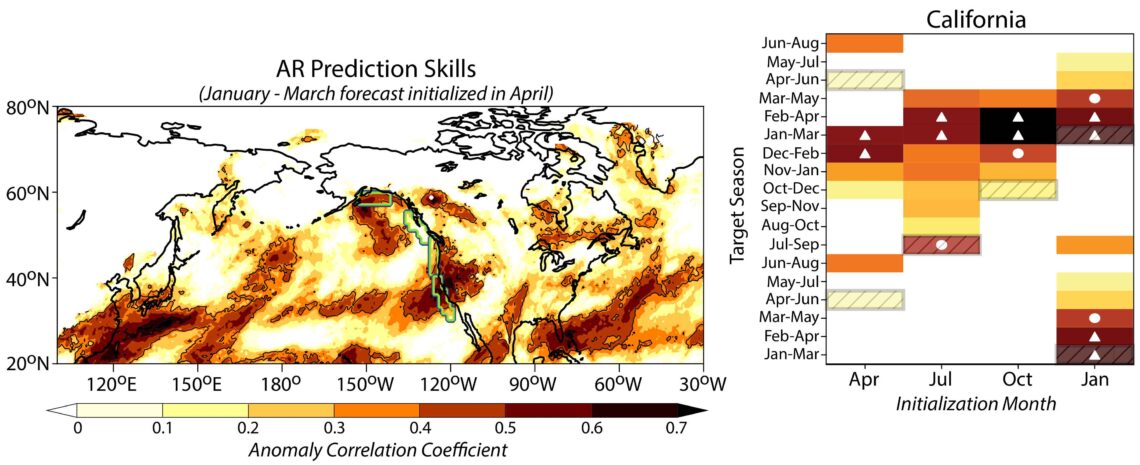March 25th, 2022
Key Findings
- GFDL’s new SPEAR seasonal-to-decadal forecast system was used to produce multi-seasonal atmospheric river (AR) frequency forecasts with predictive skill at least 9 months in advance.
- Additional analysis explores the dominant predictability sources and challenges for multi-seasonal AR prediction.
- Regional dependence of atmospheric river prediction can be explained by its connection to the leading pattern of large-scale atmospheric variability over the North Pacific
Kai-Chih Tseng, Nathaniel C. Johnson, Sarah B. Kapnick, Thomas L. Delworth, Feiyu Lu, William Cooke, Andrew T. Wittenberg, Anthony J. Rosati, Liping Zhang, Colleen McHugh, Xiaosong Yang, Matt Harrison, Fanrong Zeng, Gan Zhang, Hiroyuki Murakami, Mitchell Bushuk, Liwei Jia. Geophysical Research Letters. DOI: 10.1029/2021GL094000
In Western North America, 30% of the annual precipitation is determined by atmospheric rivers (ARs) that occur during less than 15% of the winter season. ARs are beneficial to water supply but can also produce extreme precipitation hazards when making landfall. Consequently, ARs exert significant socioeconomic impacts on this region.
The authors used GFDL’s new SPEAR seasonal-to-decadal forecast system to produce multi-seasonal AR frequency forecasts with predictive skill at least 9 months in advance. Additional analysis explores the dominant predictability sources and challenges for multi-seasonal AR prediction. Regional dependence of atmospheric river prediction can be explained by its connection to the leading pattern of large-scale atmospheric variability over the North Pacific.
Most research has focused on the sub-seasonal prediction (5 weeks or less) of ARs and only limited efforts have been made for AR forecasts on multi-seasonal timescales, which are crucial for water resource management and disaster preparedness. A prototype seasonal atmospheric river probabilistic forecast product derived from SPEAR output shows the potential of enhancing NOAA’s existing seasonal hydroclimate outlooks. The successful prediction of hydrological extremes brought on by atmospheric rivers provides timely benefits to sectors including agriculture, energy production and water resource management.



